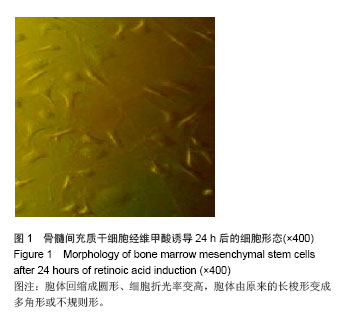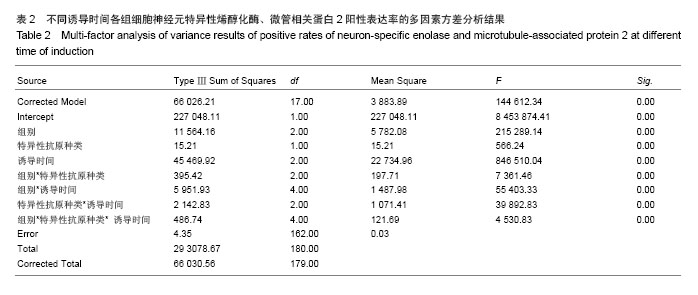中国组织工程研究 ›› 2014, Vol. 18 ›› Issue (45): 7246-7249.doi: 10.3969/j.issn.2095-4344.2014.45.006
• 骨髓干细胞 bone marrow stem cells • 上一篇 下一篇
优化培养基加快骨髓间充质干细胞的诱导分化
李 倩1,杨 军2
- 1重庆市第五人民医院神经内科,重庆市 400062;2重庆医科大学附属第一医院神经内科,重庆市 400016
Optimized medium accelerates differentiation of bone marrow mesenchymal stem cells
Li Qian1, Yang Jun2
- 1Department of Neurology, the Fifth People’s Hospital of Chongqing, Chongqng 400062, China; 2Department of Neurology, the First Affiliated Hospital, Chongqing Medical University, Chongqing 400016, China
摘要:
背景:研究发现骨髓间充质干细胞在一定的诱导条件下能分化成神经元、神经胶质等神经细胞,这一定程度上解决了种子细胞来源的难题。目前采用的诱导方法各有不同,所诱导分化的效率也不尽相同。
目的:观察不同抗氧化剂体外诱导大鼠骨髓间充质干细胞向神经样细胞分化的效果。
方法:将Wistar大鼠骨髓间充质干细胞分为4组,使用不同神经细胞诱导剂诱导分化,分别为未干预组、β-巯基乙醇组、维甲酸组、β-巯基乙醇联合维甲酸组,诱导5 h,12 h,1 d,3 d,5 d,7 d,10 d后,分别观察细胞形态变化及检测神经元细胞特异性抗原神经元特异性烯醇化酶、微管相关蛋白2阳性率表达差异。
结果与结论:未干预组骨髓间充质干细胞形态无明显改变,其他3组细胞逐渐变成纺锤形,并生出多个小突起,互相连接成网,呈现神经元样细胞形态;免疫细胞化学染色显示β-巯基乙醇联合维甲酸组在诱导10 d后其效率最高,神经元特异性烯醇化酶、微管相关蛋白2表达阳性率分别是71.63%和79.72%。结果显示β-巯基乙醇联合维甲酸可加快诱导骨髓间充质干细胞向神经元样细胞分化。
中图分类号:



.jpg)